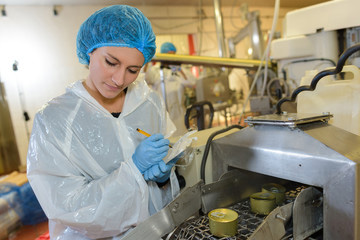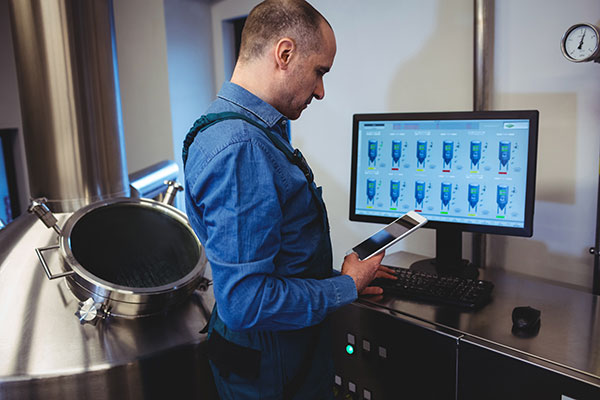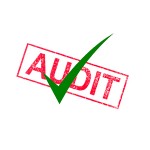Every food company understands that food safety is non-negotiable – but the smartest ones know it’s also a strategic advantage. A single recall can cost millions in lost revenue, legal fees, and brand damage. But beyond preventing disasters, a well-built food safety and quality assurance (FSQA) program drives day-to-day value: it cuts waste, improves efficiency, reduces corrective actions, and builds trust with customers and partners. When food safety is done right, it becomes a growth engine – not just a compliance requirement.
Establishing a strong food safety foundation at a facility isn’t always easy – but it’s essential. As industry professionals, our mission goes beyond meeting regulatory checklists; it’s about ensuring that consumers have a consistently safe and enjoyable experience with our products. That kind of trust isn’t just a moral obligation, it’s a business asset. At the site level, building a culture of food safety starts with the understanding that it’s not just the responsibility of the Quality Assurance team, it’s everyone’s job. When every employee takes ownership of food safety, it leads to fewer mistakes, more efficient operations, and ultimately, a stronger bottom line. Companies that prioritize food safety as a shared value often see long-term gains in brand reputation, customer loyalty, and operational performance. Simply put, a proactive food safety culture is not just good practice, it’s good business.
Investing in food safety and quality assurance (FSQA) technology lays the foundation for consistently producing a safe, high-quality product. Not too long ago – and in some places still today – many of us were logging regulatory data by hand, scribbling into controlled documents with pen and paper. I still get a little PTSD during mock recalls, flipping through endless pages trying to track where every raw material, packaging component, and finished product went. It’s a stressful reminder of how outdated systems can create major blind spots. And those blind spots don’t just affect audits, they impact decision-making, efficiency, and ultimately profitability.

The business case for investing in the right technology is both clear and compelling. In my experience, the best way to communicate this to leadership is by focusing on three key areas:
- Risk Management – not just of the product, but of the company’s reputation and the integrity of the entire facility.
- Operational Efficiency – streamlining processes, improving throughput, and reducing labor-intensive manual tasks.
- Crisis Prevention – catching issues early, minimizing corrective actions, and creating a culture of proactive quality.
Risk Management
The ripple effects of a product recall extend far beyond the affected item. They can severely damage a brand’s reputation, eroding consumer trust and loyalty – not just for the specific product, but for the entire portfolio. In the spice industry, for example, it seems like every other month there’s a headline about elevated lead levels in ground cinnamon. In today’s environment, simply meeting the bare minimum for regulatory compliance – such as basic product testing – is no longer enough.
By leveraging FSQA technology and real-time data, companies can stay ahead of potential or ongoing recalls. When an alert surfaces in the media, we can quickly compare our own verified data and, if unaffected, proactively communicate with our customers through targeted email notifications. This kind of responsiveness not only minimizes confusion and concern but also reinforces customer confidence in the brand.
Investing in FSQA systems provides the transparency and control needed for modern operations. With access to real-time information, teams can make faster, more informed decisions that protect both product integrity and long-term brand value.
Operational Efficiency
As FSQA professionals, it often feels like a rite of passage to be pulled into optimizing production throughput, whether it’s assisting with product identification, staging resources, or even jumping on the line to help package finished goods. Viewing production through a Lean Six Sigma lens reinforces the value of continuous improvement and challenges us to eliminate inefficiencies at every step.
Investments in quality and production compliance software that track records directly on the line can dramatically enhance multiple areas of the manufacturing process. FSQA systems aren’t just about ensuring safety, they’re about increasing speed, accuracy, and control. By digitizing checklists, records, and monitoring tools, you reduce human error, eliminate redundant tasks, and free up your team to focus on higher-value work.
The result? Fewer production delays, faster response times when things go off-spec, and improved communication across departments. Over time, these efficiencies add up. You produce more, waste less, and consistently deliver a better product, driving both customer satisfaction and profitability.
Crisis Prevention
There’s never a “good time” for a crisis in food manufacturing. In fact, it often feels like clockwork – recalls, withdrawals, major product holds, or employee-related issues always seem to happen during holidays, PTO days, or after hours, usually hitting second or third shift when staffing is light. But as an FSQA leader, one of the most powerful things you can be is prepared.
Most crises don’t appear out of nowhere, they build over time. There are usually early warning signs: small deviations, overlooked documentation, or repeated non-conformances. That’s where digital FSQA tools make a major difference. These systems help identify patterns, flag risks, and trigger alerts to the right stakeholders before a situation spirals out of control. By monitoring data in real time, you’re no longer reacting to problems, you’re getting ahead of them.
When a crisis management plan fails, or a recall or other serious event occurs, time is of the essence. Digital documentation becomes an invaluable tool, allowing teams to quickly and efficiently gather the necessary information. With properly formatted compliance records and organized quality documentation, searching for critical data becomes seamless. And in the middle of a high-pressure recall situation, the last thing any professional needs is added stress while digging through stacks of paperwork to determine where affected products were received, processed, or shipped.
As we all know, when dealing with thousands, or even millions, of pounds of product, there are countless variables involved in producing a single finished good. The digital advantage lies in how effortlessly team members can access key records. With well-implemented FSQA software, anyone on the team can quickly locate the information they need, supporting faster traceability, better communication, and more effective crisis resolution.
Getting Past the Red Tape
When advocating for investment in FSQA technology, it is not uncommon to encounter hesitation based on perceived barriers. A frequent concern is, “It’s too expensive.” However, the long-term cost of inaction, such as product recalls, operational inefficiencies, and damage to brand reputation, can far exceed the initial investment. Others may argue, “We already meet regulatory requirements.” While compliance is essential, it represents the minimum standard, not a comprehensive strategy for quality and business growth. Additionally, some organizations may believe, “Our process isn’t that complex.” Regardless of complexity, every manufacturing process benefits from enhanced visibility, traceability, and operational control.
The easiest route to take when it comes to getting buy-in for the installation of digital compliance programs is looking at it from a lean six sigma standpoint. Continuous improvement is the mindset that any successful company achieves. Through means of integration and technological advances for digital modernization of compliance records, your company can start setting best-in-class precedents where others will be benchmarking against your trailblazing standards.
Another important layer to a strong ROI pitch is the value FSQA technology brings from the customer’s perspective. Whether you’re working with a major industry player or a small, independent retailer, demonstrating a robust compliance and quality management system builds confidence and credibility. As the primary liaison during customer visits, I’ve found this is the moment where I truly let our quality software system shine. Having real-time data at my fingertips for every production line, and the ability to quickly identify and troubleshoot potential issues, is something customers genuinely appreciate. It’s not just the live data that impresses them; it’s also the compliance component. The system allows us to generate and present documentation that’s properly formatted and aligned with the Code of Federal Regulations requirements, which reinforces our commitment to quality and regulatory integrity.
The Cost of a Competitive Advantage
It’s true that there can be initial sticker shock when exploring the cost of transitioning to a digital quality management system. However, the return on investment often proves to be tenfold. One of the most valuable benefits is the organization, accuracy, and accessibility of documentation. In a digital environment, critical records are no longer buried in file cabinets or scattered across spreadsheets.
Consider the stress of an audit scenario: you’re asked to produce one final, crucial document, and it’s nowhere to be found. With digital systems, a simple search, by lot code, SKU, date, or other filters, can instantly retrieve the exact file needed, saving time, reducing anxiety, and reinforcing confidence.
Moreover, the financial risk of product recalls, often amounting to millions of dollars, underscores the value of having a robust, sophisticated FSQA system in place. In many cases, the cost of the software is easily justified by the protection and efficiency it provides.
Scaling Smarter with FSQA
Food Safety and Quality Assurance is no longer just a safety net, it’s a springboard for sustainable growth. Organizations that embrace FSQA as a strategic initiative are positioning themselves as best-in-class in both operational excellence and brand integrity. These companies don’t just meet expectations, they set the benchmark for what quality and trust should look like in today’s food industry.
By implementing advanced FSQA systems, they gain efficiency, strengthen consumer confidence, and stand out in a competitive marketplace. Now is the time to shift the narrative from compliance to competitive advantage. Invest in systems that help your business do it right the first time, and become the standard others look for best practices.








